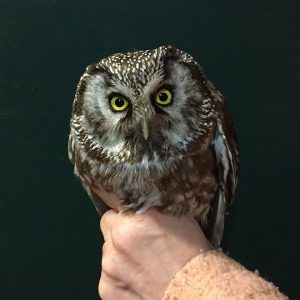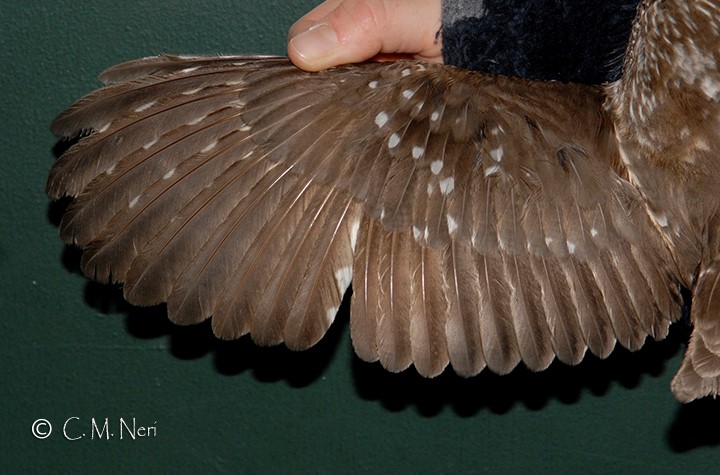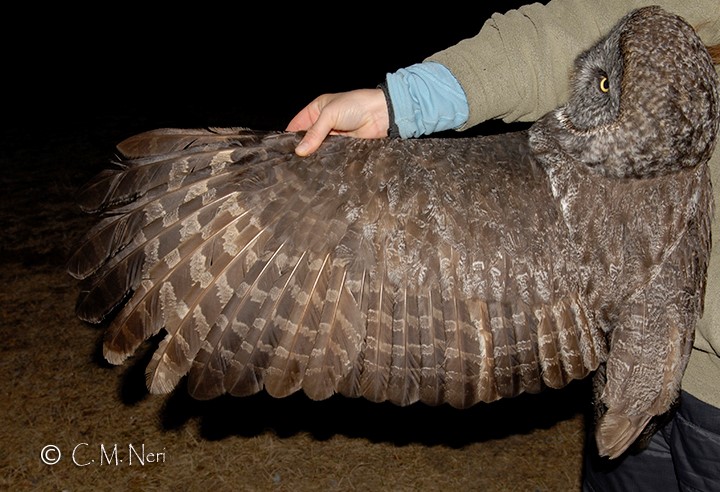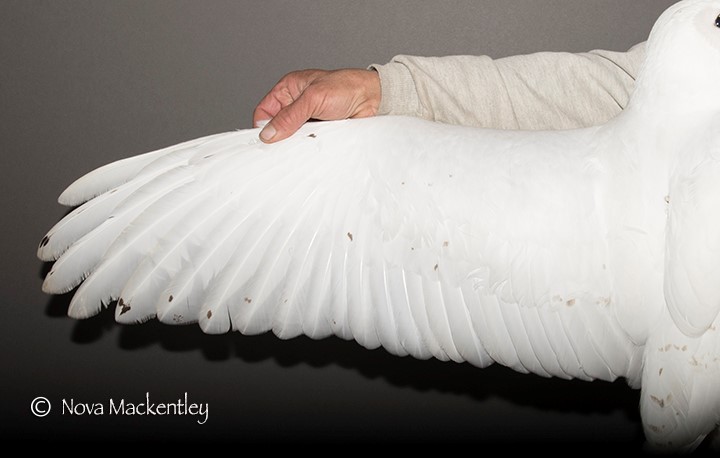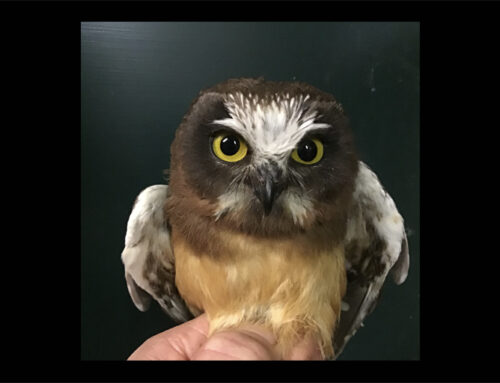By Chris Neri and Nova Mackentley
Nova Mackentley and I are excited to be back at WPBO for another spring owl banding season. The banding results in March can vary significantly from year to year, and we’re unfortunately off to a slow and frigid start this year. Fortunately, we know a slow start usually does not affect the end result, it just means that most owls have not started moving through the Point yet. To date, we have banded five Northern Saw-whets & three Boreals. The three Boreals are somewhat promising. Boreal Owls were expected to irrupt in the fall of 2016 but did not. Hopes were high last fall because sometimes irruptions are simply delayed by a year. Some northern banding stations did band decent numbers last fall, but not as many as are hoped for in big irruption years and just one was banded here last fall. Therefore, we’re not expecting that it is going to be a particularly good season for them this spring, but maybe the three already banded this season is an early indication that it will be at least be a decent one.
As the owls have not yet provided us with much to share on the blog, we figured we’d take this opportunity to share a little general information on molt. Most of the owl species we work with take at least a couple of years to replace all of their flight feathers. Long-eared Owls are the most notable exception, as they often do replace all of their primary and secondary flight feathers in one molt cycle. In species that do not replace all of their flight feathers in one year, the presence of molt, or lack thereof, is the most useful way to assign an age to an owl. Old feathers will appear more faded, and often more worn than new feathers. Effectively, if the flight feathers are uniform in color and wear, it is a young bird that has not molted. If the flight feathers are not uniform in color and wear then it has molted at least one time. There are also often typical patterns of feather replacement from the first and second molts, and sometimes the third in some species that can allow for specific aging. Here are a couple examples with some general information.
Northern Saw-whet Owls have a very consistent molt pattern after their first molt. Although the number of feathers replaced vary, they replace their outer primaries and inner secondaries during their first molt. This results in a block of retained feathers in the middle of the wing that are a lighter brown than the newer feathers. This Saw-whet retained six feathers in the middle of the wing, the innermost three primaries, and the outermost three secondaries.
This Great Gray appears to have three generations of adult flight feathers. While it is easy to tell the newest generation of feathers from older feathers on Great Grays, it can be maddening trying to distinguish between feathers that are one year old or older.
We absolutely love studying the molt on owls. We’ve been very fortunate to gain a lot of personal knowledge of the molt on the species we work with most regularly. It’s also very exciting to occasionally gain new experience with a species that we are less familiar with. We once again had the chance to work with Snowy Owls this winter in our “off” time. A new experience for us this winter was banding two older adult male Snowy Owls. We know that adult Snowy Owls always have multiple generations of flight feathers, but the first words spoken as we examined the flight feathers on this owl were, “Well, this has to be an adult, right?” There are indeed at least two generations of feathers on this wing, they are just very difficult to detect on a bird this white.
Hopefully, the owls will have picked up at least a little by our next post. Meanwhile, we hope you enjoyed a little bit of information on owl molt.
Visitors may observe owl banding on Friday and Saturday evenings from dusk to midnight, weather permitting. Due to current snow conditions, the net lane trails are off-limits to foot traffic until the snow melts to keep the trails safe for the Owl Banders skiing in the dark of night. If you have a large group (5 or more), please call (517) 580-7364 or email [email protected] to make arrangements.

